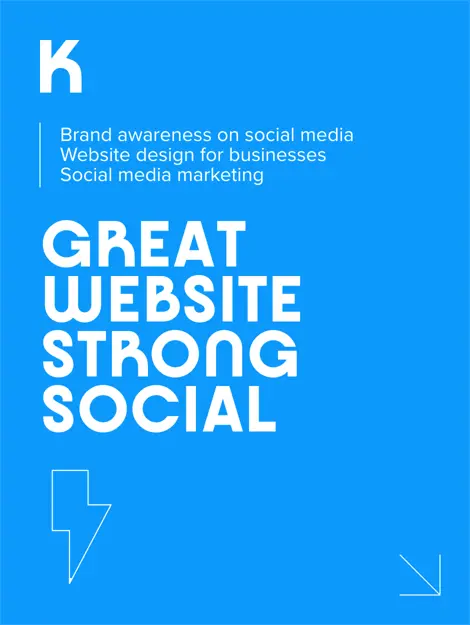Imagine discovering a business online, but its website is outdated or nonexistent. Would you still trust it? Now, picture another brand with a polished website but zero social media presence – no reviews, no updates, no way to engage. Which one would you buy from?
Today’s consumers expect businesses to have both a professional website and an active social media presence. They research, compare, and connect across multiple platforms before making a decision. If your business isn’t showing up in the right places, you’re losing potential customers. Here’s why integrating your website and social media marketing is the smartest move for long-term growth.
The role of a great website
A well-designed and well-built website is the foundation of your online presence. It’s where potential customers go when they want to learn more about your business, check your credibility, and decide whether to buy from you. In today’s digital world, businesses that lack a professional website often struggle to build trust and convert leads.
Here’s why a great website is essential:
Credibility and trust – A well-structured, user-friendly website instantly reassures potential customers that your business is legitimate and professional. A whopping 75% of consumers judge a business’s credibility based on its website design.
Lead generation and sales – Whether through a contact form, booking system, or e-commerce checkout, your website acts as a conversion hub where visitors can take action without distractions.
SEO and visibility – Unlike social media posts that disappear in a feed, a well-optimised website ranks in search engines, driving long-term organic traffic. Businesses that invest in SEO can generate 1,000% more traffic than those relying solely on social media.
24/7 accessibility – Unlike a physical store or office, your website works around the clock to inform and convert visitors, regardless of time zone.
The power of social media
While a website acts as your digital storefront, social media brings your brand to life. It’s where customers interact with your business in real time, discover your latest updates, and connect with your brand on a more personal level.
Brand awareness and visibility – With billions of active users across platforms like Facebook, Instagram, LinkedIn, and TikTok, social media marketing helps businesses reach wider audiences. Research shows that businesses that engage on social media see a direct positive influence on brand loyalty.
Customer engagement and community building – Unlike a static website, social media allows for two-way communication, letting businesses respond to customer questions, feedback, and messages instantly.
Driving website traffic – Businesses that actively share content and promotions see a significant boost in website visits. In fact, social media accounts for 60% of all online brand discovery.
Social proof and credibility – Reviews, testimonials, and user-generated content (UGC) all contribute to building consumer trust. People are more likely to buy from brands with strong social media engagement and positive online feedback.
How a website and social media work together
Instead of treating your website and social media as separate marketing tools, think of them as two sides of the same coin. When integrated correctly, they amplify each other’s strengths and create a powerful digital presence.
Seamless integration – Embedding social media feeds on your website keeps your content fresh and engaging while adding website links to your social bios ensures easy navigation for potential customers.
Traffic and conversions – Social media drives users to key landing pages on your website, whether for promotions, blog posts, or lead generation forms.
Businesses that strategically link their social media and website are likely to see a higher conversion rate than those that don’t.
Analytics and insights – Social media engagement metrics (likes, shares, comments) can provide insights into customer preferences, while website analytics (bounce rates, page views) help refine content strategy. By using both, businesses gain a comprehensive view of customer behaviour.
Tips for maximising both your website and social media strategy
Website optimisation:
- Ensure mobile responsiveness, as over 62% of online traffic comes from mobile devices.
- Improve page speed, as slow-loading sites can lead to higher bounce rates.
- Use clear CTAs like "Shop Now" or "Book a Free Consultation" to encourage action.
Social media best practices:
- Focus on platforms where your target audience is most active.
- Maintain a consistent posting schedule to stay top of mind.
- Engage with customers through polls, Q&A sessions, and community discussions.
Integrating both for success:
- Regularly promote your website on social media through posts and stories.
- Embed social media feeds directly on your website for dynamic content.
- Use social media ads to drive traffic to lead-generation landing pages.
The importance of a holistic digital strategy
Businesses can’t afford to rely on just a website or just social media – they need both to work together. A website serves as the backbone of your online presence, while social media expands your reach, engages your audience, and directs traffic back to your site.
By strategically combining both elements, businesses can increase brand visibility, build trust, and drive sustainable growth.
Looking to create a website that works hand-in-hand with a winning social media strategy? Let Koola Digital help you build a powerful, integrated digital presence that fuels long-term success. Contact us to get started.




